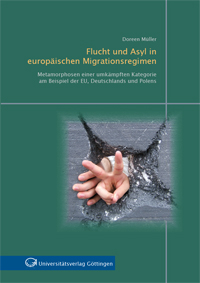In the Federal Republic of Germany the number of asylum seekers has fallen considerably in recent years. The recognition rate lies at around one percent. What has happened to the refugees? Are there no longer any reasons to apply for asylum? In order to find asylum seekers, one must look in the new EU member states on the external borders, and to the countries immediately beyond the borders: because of regulations about jurisdiction, more and more refugees become stranded on the edges of the EU and can only reach other European target countries by irregular means. The study shows, using Germany and Poland as examples, how the significance of asylum law has changed over the last 20 years, how this change can be explained, and how it relates to migrants’ strategies. Inthis manner the study offers new insight into the field of asylum policy in three respects: on the one hand, asylum policy is analysed in the context of category construction related to migration policy. In this way the significance of the categorization and hierarchization of ‘desirable and ‘undesirable’ migrants as a central component of ‘migration management’ is revealed. On the other hand, the two studies of individual countries provide an extensive picture of asylum policy in Germany and Poland. By embedding the two case studies in developments at EU level, and relating them to each other, the study offers a new and comprehensive insight into the dynamics which have determined the changes in the European asylum regime in the last two decades.
Publikationstyp: Monographie
Sparte: Universitätsverlag
Sprache: Deutsch





